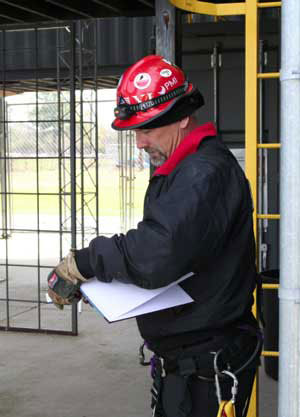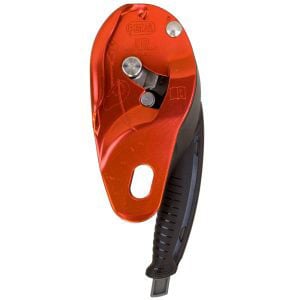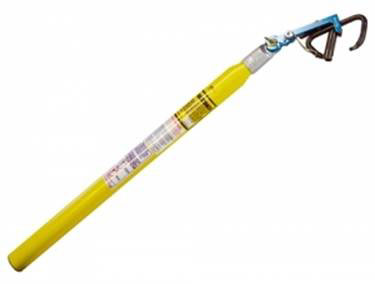 Report submitted by John Voinche', Sr. Vice President/COO, Roco Rescue
Report submitted by John Voinche', Sr. Vice President/COO, Roco Rescue
In July, a group of Roco instructors conducted a Confined Space Rope Rescue demonstration for OSHA representatives from Washington, DC. These agency officials represented both General Industry and Construction. This demo was used to clarify our concerns about a pending Letter of Interpretation (LOI) concerning Individual Retrieval Lines in confined spaces that was brought to our attention last year. Here is a little background…
Last July (2011), we brought you a story entitled, “What’s the talk about individual retrieval lines?” At the heart of the issue was a pending LOI from OSHA regarding how retrieval lines are used inside confined spaces. [Note: This LOI is pending and has not been published in the Federal Register.]
“Does OSHA 1910-146 (k)(3) require that each individual entrant, including workers and/or rescuers, entering into a confined space be provided with an independent retrieval line or can more than one entrant be connected to a single retrieval line?”
The proposed answer from OSHA stated that each entrant should have an “individual” retrieval line, despite the fact that the word “individual” is not included in this section of the standard [1910.146 (k)(3)(i)].
Roco then wrote a letter to OSHA requesting clarification about the forthcoming LOI. A portion of our letter stated that, “This pending interpretation is different from our understanding of what’s required by the regulation. While this particular technique is one option of providing external retrieval, there are other alternatives currently being used by rescuers.”
One of the techniques being used is a “single retrieval line” for multiple entrant rescuers. The first rescuer to enter the space is attached to the retrieval line via an end-of-line Figure 8 on a Bight. Any subsequent rescuers enter the space attached to the same retrieval line using mid-line Butterfly knots. In our opinion, this satisfies the intent of the regulation in that each entrant is attached to a retrieval line.
However, in the case of multiple entrants, requiring “individual” lines as mentioned in the proposed LOI may represent an entanglement hazard. This, in effect, may cause entrants to opt out of using retrieval lines due to potential entanglement hazards (which is allowed by the standard if entanglement hazards are a concern). So, in our opinion, this effort to bring more clarity to the issue may further complicate the matter.
Again, we believe the single retrieval line method described above is one way to rescue entrants while satisfying the intent of the standard at the same time. More background is available by reading our original story.
Fast-forward back to July 2012… the demonstration lasted about four hours. During this time, Roco demonstrated numerous retrieval line techniques as well as the “pros and cons” for each system. There was a great deal of discussion back and forth on how this pending letter of interpretation could affect rescuers and entrants – and their ability to perform their jobs safely and efficiently.
We would like to thank OSHA for allowing us to offer our feedback concerning this topic. We also want to say a special thanks to the Baltimore Fire Department for allowing us to use their training facilities. We don’t know when a final LOI will be issued, but we will keep you posted!

 By Roco Chief Instructor Pat Furr
By Roco Chief Instructor Pat Furr Reviewed by Pat Furr, Roco Chief Instructor/Technical Consultant
Reviewed by Pat Furr, Roco Chief Instructor/Technical Consultant
 By Pat Furr, Roco Chief Instructor/Technical Consultant
By Pat Furr, Roco Chief Instructor/Technical Consultant


